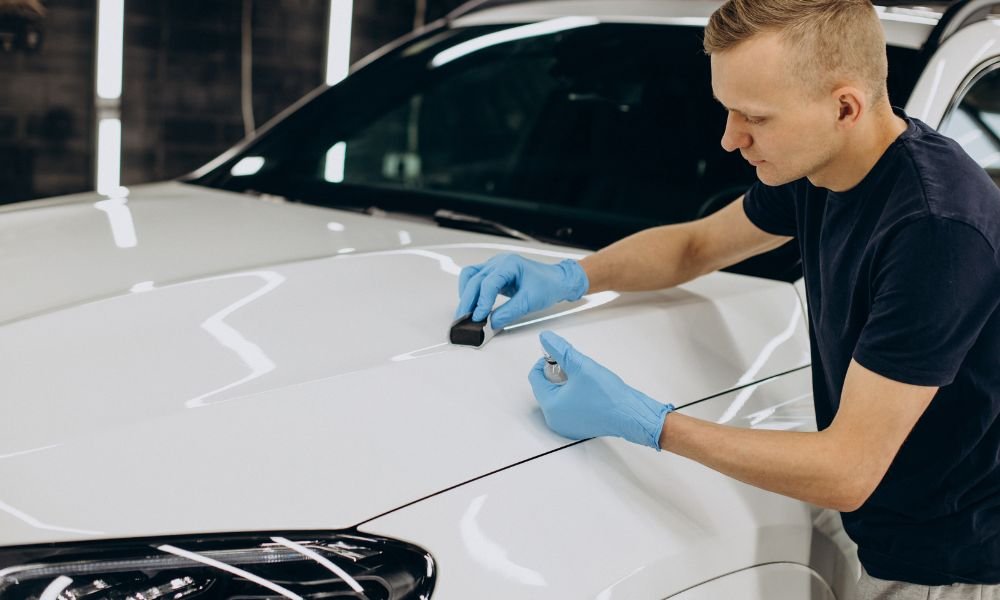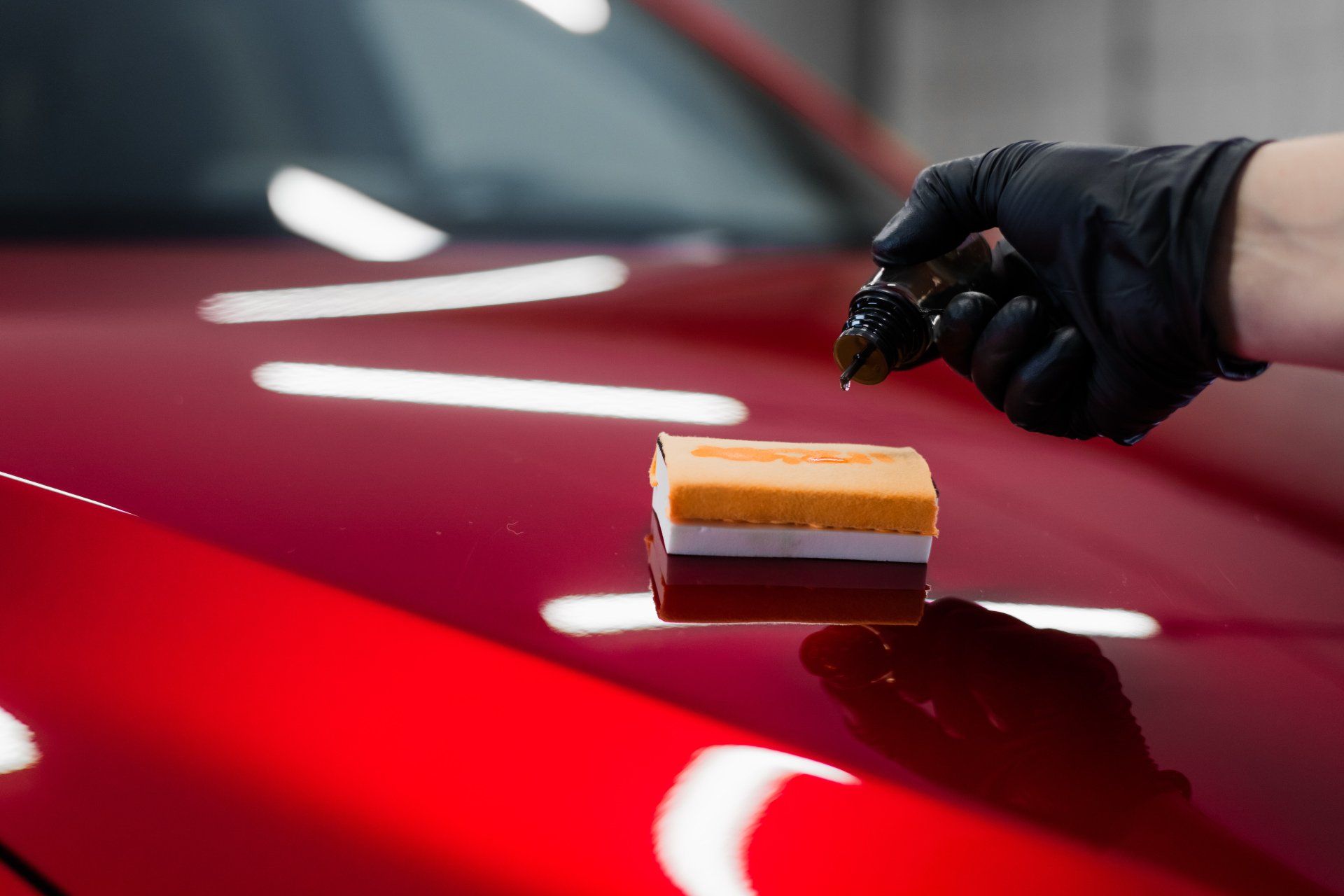Ceramic Coating vs. Sealants: Comprehending the Distinctions for Your Cars and truck
Ceramic Coating vs. Sealants: Comprehending the Distinctions for Your Cars and truck
Blog Article
The Value of Ceramic Coating: Shielding Your Car's Outside With Accuracy
In an age where preserving the functional and aesthetic honesty of your vehicle is critical, ceramic coating emerges as an essential solution. With its distinct bonding buildings, ceramic finish provides a degree of security that far surpasses standard waxing approaches.
Benefits of Ceramic Coating
When it comes to preserving a cars and truck's aesthetic charm, ceramic coating uses substantial advantages. By forming a semi-permanent bond with the lorry's paint, ceramic finishes efficiently prevent oxidation and fading, ensuring that the auto maintains a glossy, showroom-like finish for an extensive duration.
Along with its safety top qualities, ceramic layer supplies amazing hydrophobic residential properties, creating water and various other fluids to bead off effortlessly. This function simplifies the cleansing procedure, as dirt and debris are less likely to follow the surface area, decreasing the frequency and effort needed for upkeep. The layer's resistance to chemical discolorations from acidic impurities like bird droppings and tree sap is an additional notable advantage, reducing possible paint damages.
Ceramic layers likewise enhance scratch resistance, providing a layer that can soak up minor abrasions and swirl marks. This feature is particularly useful in keeping an immaculate surface, minimizing the possibility of visible blemishes and preserving the stability of the vehicle's paintwork in time.

How Ceramic Layer Works
Understanding the technicians behind ceramic covering reveals its efficiency as a safety remedy for lorries. Ceramic coatings are basically fluid polymer applications that chemically bond with an automobile's factory paint, producing a protective layer. This layer works as an obstacle versus environmental impurities such as crud, dirt, and ultraviolet rays, which can deteriorate a car's exterior with time. The crucial element in ceramic layer is silicon dioxide (SiO2), which originates from quartz crystals and is recognized for its outstanding hardness and resilience.
Application of ceramic coating entails a precise process. This shield boosts the automobile's gloss and hydrophobic residential or commercial properties, helping with much easier cleaning by triggering water and impurities to grain and slide off effortlessly.
In addition, the coating's molecular framework offers resistance to small scrapes and chemical discolorations. Unlike waxes or sealers that rest on top of the paint, ceramic layers integrate with the surface, providing lasting protection. This assimilation is basic to its effectiveness, ensuring the vehicle's finish continues to be excellent for years.
Contrasting Ceramic Coating to Alternatives
In the realm of automobile protection, ceramic layer stands as an awesome option when contrasted to conventional options such as waxes and sealers. While waxes use a short-term lustrous finish, usually lasting just a couple of weeks to months, ceramic coatings supply a longer-lasting remedy, typically sustaining for many years. This toughness is associated to the chemical bonding that happens when ceramic coatings are used, creating a solid layer that my response is immune to ecological threats.
Contrastingly, sealers, although even more durable than waxes, still fall short of the durable defense used by ceramic layers. Sealers can typically last for as much as a year, offering an artificial guard versus specific aspects. Nevertheless, they do not have the remarkable hydrophobic residential or commercial properties and UV protection that ceramic coverings deliver.
In addition, ceramic layers provide improved scrape resistance, which neither waxes nor sealers can successfully match. In summary, while standard waxes and sealants offer fundamental security, ceramic finishes offer a comprehensive, lasting remedy that considerably improves and preserves the automobile's outside surface.
Application Process Discussed
Applying ceramic finish to a car needs a meticulous procedure to guarantee ideal results and resilience. The initial action includes completely cleaning up the vehicle's surface area to eliminate dust, grease, and previous waxes. This is important for guaranteeing the covering adheres correctly. A pH-neutral shampoo and a clay bar treatment are frequently used to attain an immaculate surface area. As soon as cleaned up, the lorry is dried and polished to get rid of any kind of blemishes, as any type of existing swirls or scrapes can end up being extra pronounced after the finishing is applied.
Adhering to surface area preparation, the application of the ceramic covering begins. The finishing is commonly used in a climate-controlled environment to avoid dirt particles from working out on the newly cleansed surface area. Using an applicator pad, the ceramic coating is applied in little areas to ensure even insurance coverage. It is vital to comply with the producer's standards pertaining to the suitable healing time and application density.
After application, the layer requires a certain healing period, during which the automobile needs to be protected from water and pollutants. This treating procedure can vary depending upon the item yet generally ranges from 24 to 2 days. Ultimately, this in-depth procedure is crucial in achieving a resilient and glossy surface.
Upkeep Tips for Long Life
To keep the long life of a ceramic coating, adherence to a disciplined maintenance routine is important. Routine washing is critical; utilize a pH-neutral cars and truck hair shampoo and soft microfiber gloves to stay clear of abrasions. Stay clear of automated car cleans, as their harsh brushes click now can compromise the covering's integrity. Instead, opt for a hand wash to ensure extensive yet gentle cleaning.
Post-wash, drying the vehicle with a clean microfiber towel prevents water spots that may degrade the covering in time. Additionally, use a ceramic covering booster every few months. These boosters enhance the hydrophobic residential or commercial properties and enhance the coating's safety capacities, ensuring it stays efficient versus impurities.
Bear in mind that vehicle parking locations play an essential role in maintenance. ceramic coating. Whenever feasible, park in shaded locations to minimize UV direct exposure, which can progressively compromise the coating. For long-term storage space, consider using a cars and truck cover for added defense against environmental components
Verdict
In verdict, ceramic covering serves as a critical protective layer for car outsides, supplying long-lasting defense versus environmental elements such as uv, crud, Click This Link and dust rays. Understanding the application process and adhering to upkeep recommendations are vital for optimizing the long life and effectiveness of ceramic finish.
When it comes to preserving an automobile's aesthetic charm, ceramic layer offers substantial advantages. By forming a semi-permanent bond with the vehicle's paint, ceramic coverings efficiently stop oxidation and fading, making sure that the auto keeps a glossy, showroom-like finish for an extensive duration. Ceramic layers are basically fluid polymer applications that chemically bond with a cars and truck's factory paint, producing a safety layer. In summary, while typical waxes and sealants use standard protection, ceramic coverings provide a detailed, long-term remedy that significantly preserves the car and enhances's outside surface.

Report this page